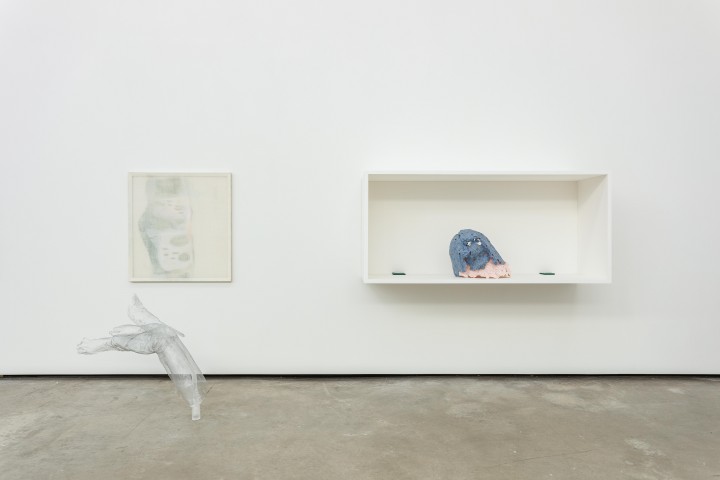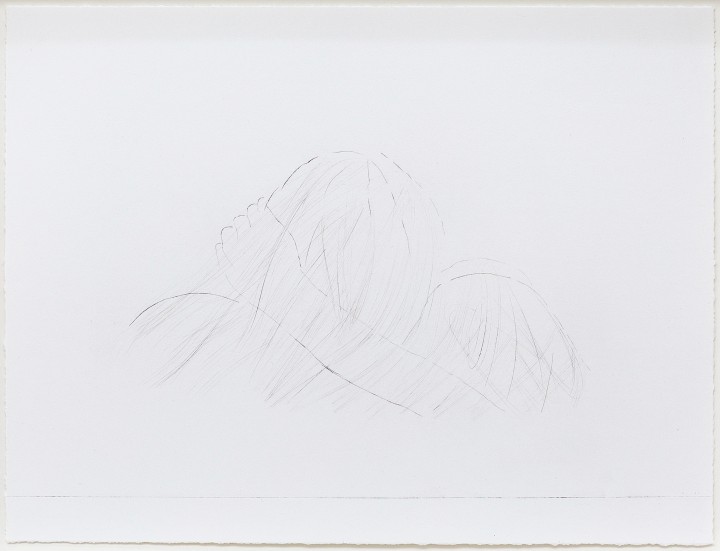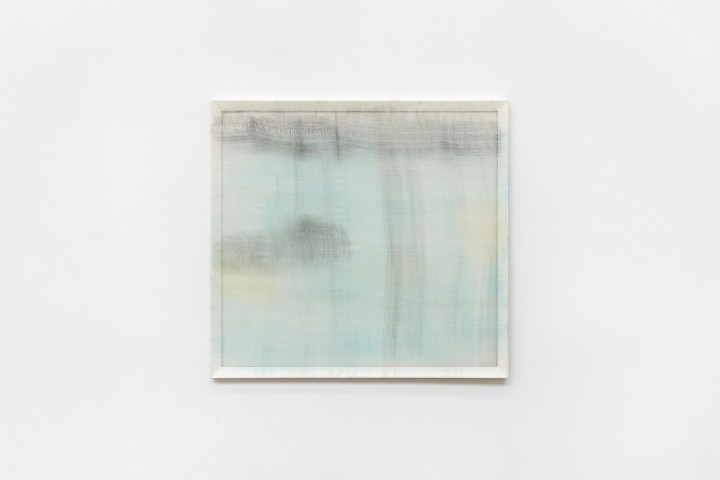Scottish Art News
Latest news
Magazine
News & Press
Publications
Unbearable Lightness
By Greg Thomas, 15.12.2021

I was reminded on encountering Cathy Wilkes’s new show of sculptures and paintings of the recession of figurative detail in Samuel Beckett’s late writing. Whereas mid-career works like Waiting for Godot are replete with historical and cultural suggestion, albeit discontinuous – are these tramps on the Left Bank, wanderers in the post-war ruins of Europe, the thieves of Calvary? – the prose and drama of his final years boiled down mis-en-scène to a mere residue. Single figures are found hunched over or standing in void-like spaces, the action comprising a few tortuous, cyclical movements.
Analogies like this tend to reveal more about the writer than their subject–but then Wilkes might prefer it that way. She has often emphasised the necessarily individual nature of interpretation when it comes to her practice. The point, in any case, is that in the past her installation-based work has tended to incorporate more obvious figurative detail than we can find in the current show: often the detritus of what appears to be some traumatic domestic scene, which in turn invites connections with circumstances of the artist’s Belfast childhood, and with wider themes of societal and familial strife. For works such as I Give You All My Money and (We Are) Pro Choice (both 2008), female mannequins were sited amongst drifts of household and commercial waste – ovens, ladders, piles of tiles, buggies, toilet seats – their faces and bodies strung around with macabre, comic adornments: hamster cages, teacups, horseshoes.
 Cathy Wilkes, Untitled, 2021. Dry point etching on paper. Courtesy of the Artist and The Modern Institute/Toby Webster Ltd, Glasgow. Photo: Patrick Jameson.
Cathy Wilkes, Untitled, 2021. Dry point etching on paper. Courtesy of the Artist and The Modern Institute/Toby Webster Ltd, Glasgow. Photo: Patrick Jameson.
Some of that lurid excess seems to have been stripped away over recent years. Wilkes’s 2019 British Pavilion show at the Venice Biennale featured more sparsely defined, limbless female forms, some with bulbous grey prostheses on their bellies. On the wall were spare tonal paintings similar to the ghostly works in pigment and gum arabic that constitute much of this new exhibition—along with a set of dry-point etchings. I was struck in the soft daylight – which, the artist stipulated, should be the only source of light for the show, hence its early closing time – by the tendency for torsos, limbs, and details of landscape to appear for a few seconds, almost as if hovering in front of the picture-space, then disperse. Is that a suited body, the curve of a heel, a riverbank, a crucifix?
The fact that visual forms recur with minor variations across the different works on display enhances the insistent, hallucinatory impact of Wikes’s motifs and marks. The neck of what might be an old stonework bottle or inkwell shifts in and out of patches of shadowy, textured ground; a female head held in the hands, perhaps, reappears behind a smog of scratchy lines. In two cases, the impression of mirage-like form is enhanced by the use of pineapple cloth, pulled taut across a frame, as the painting surface, with just blank space and backing behind. It’s tempting to read into many of these wall-based pieces some homage to British Impressionism in the Whistler-Sickert vein; Wilkes has spoken of her admiration for the latter artist’s seedy, brown-and-grey urban vignettes.
Floating – as it very much seems – to the fore of the paintings are the sculptures. Constructed from wire and translucent fabric, it’s as if they are disappearing in front of our eyes, legs and heads recently vanished, the figure a memory that can suddenly no longer be recalled. In a display unit to the far end is a scrappy, bulbous construction in blue and pink tissue, flanked with little squares of fabric: a head, a womb, a weird surgical cast of some kind? The real achievement of this show is to leave a precise atmospheric trace in the mind, in spite of the lack of clear answers that can be found to such questions.
 Cathy Wilkes, Untitled, 2021. Pigment and gum arabic on Pineapple Cloth. Courtesy of the Artist and The Modern Institute/Toby Webster Ltd, Glasgow. Photo: Patrick Jameson.
Cathy Wilkes, Untitled, 2021. Pigment and gum arabic on Pineapple Cloth. Courtesy of the Artist and The Modern Institute/Toby Webster Ltd, Glasgow. Photo: Patrick Jameson.
Cathy Wilkes runs at the Modern Institute, Glasgow, until 22nd January 2022




